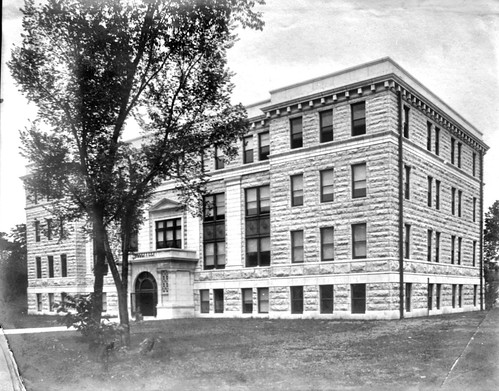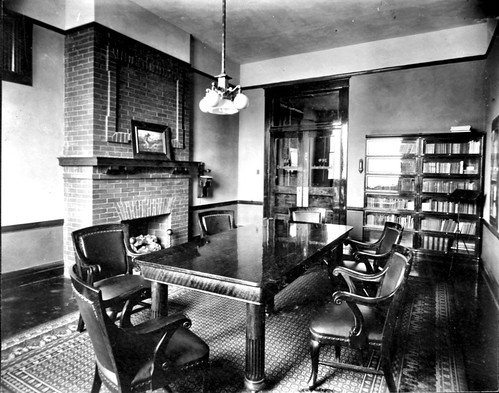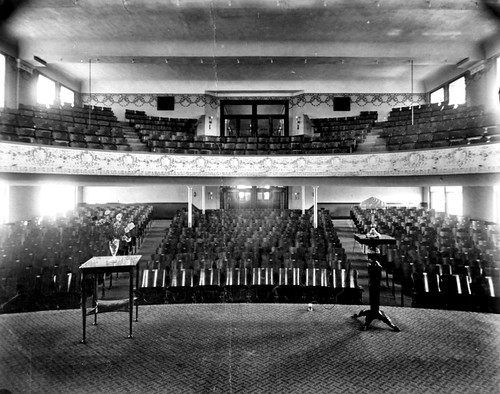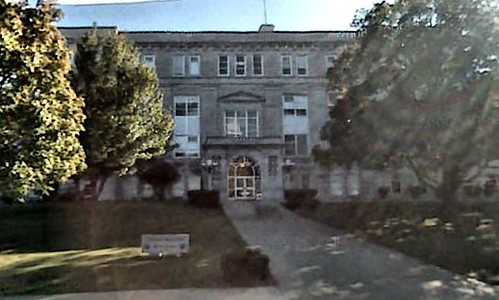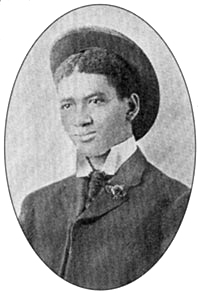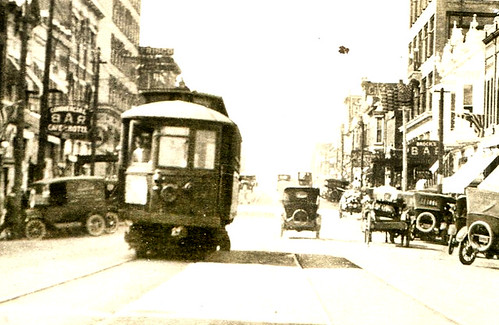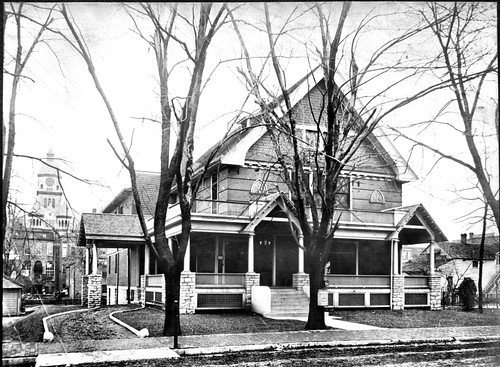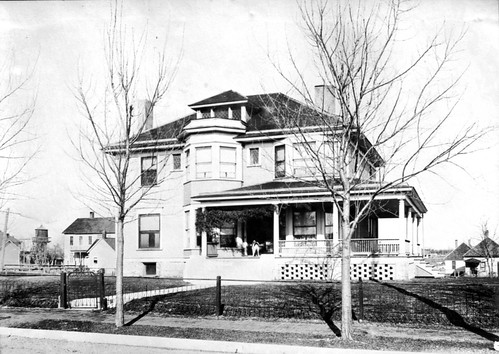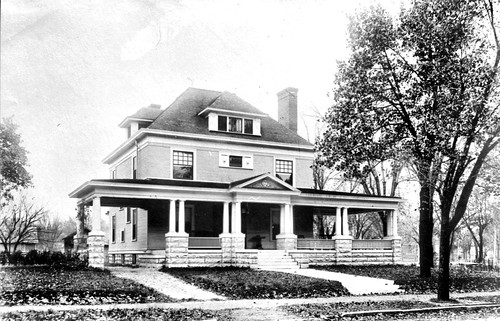
Earnest B. Jacobs House
The next photograph in our Alfred W. Rea portfolio series is the Earnest B. Jacobs house in Carthage, Missouri. A History of Jasper County, Missouri and Its People, by Joel T. Livingston, has this to say about Mr. Jacobs:
Life is a voyage, in the progress of which we are perpetually changing our scenes. Ernest Jacobs has now arrived at a port where he can stop a while and look back at that part of the voyage he has already successfully made. He has seen the good and the evil that are in the world,–the ups and the downs, and he has learned to be uncensorious, humane. He has learned to attribute the best motives to every action and to be chary of imputing a sweeping and cruel blame. He has no finger of scorn to point at anything under the sun. Along with this pleasant blandness and charity there is a certain grave, serious humor. From this same port he can see an expanse of waters covered with a mist. If there are rocks ahead he cannot see them; if there are whirlpools he hopes to be able to avoid them with the aid of the same pilot that has guided him heretofore and by steering with the same steady hand that has up to this port kept his course straight.
Launched on the sea of life July 20, 1858, in the port of Chicago, Illinois, Ernest B. Jacobs set sail. To leave metaphor for a while, his father, John W. Jacobs was born in New York state in Watertown. He was educated there and studied for the ministry. He entered the Methodist church, his first charge being in his native state. Then he was stationed in Chicago, Illinois, where he was very well known on account of his eloquent oratory and his earnest, conscientious work. While he was still living in New York he married Lucy Young, a native of Ohio. After the death of her husband in Kansas City she went back to New York, where she is living with one of her children.
Ernest B. Jacobs went with his parents from Chicago to Carthage when he was very young. He went to the public and high schools in Carthage. Upon leaving school he taught for a number of years. Although he was a successful teacher, he did not intend to make teaching his life work. In 1877 he was tendered the position of assistant postmaster in Carthage; he accepted the office and held it for eight years, at the end of which time he became associated with the First National Bank of Carthage.
Desiring to learn the banking business thoroughly in all its branches, he started in at the bottom of the ladder, but quickly mounted the rungs until he became cashier. He has held this position for a number of years and is considered one of the veteran financiers of Carthage. During the twenty-six years of his connection with the First National Bank there have been a number of panics, but in that period the bank has never been obliged to borrow a dollar, nor has it been in financial straits at all. He is a director of the banks at Alba, Reeds and LaRussell and it is a significant fact that all three banks have been in a flourishing condition since his connection with them.
In 1884 Ernest B. Jacobs drifted into the matrimonial sea, taking with him Miss Carrie Farwell, belonging to an old Carthage family. The course was steered clear of the breakers which impede the progress of so many sailors in the same sea. They have two children Ernestine, born in Carthage, January 3, 1895, has just (1911) completed her course at the Carthage high school. Jay W. Jacobs, born in Carthage January 7, 1899, is attending the grammar school.
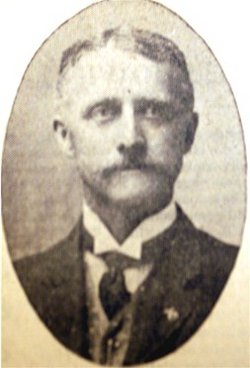
Image via Find A Grave.com
Mr. Jacobs’ connection with the Masons has been a very pleasant one. He is a member of the Carthage Blue Lodge, a Royal Arch Mason, a Knight Templar and a Shriner. He is a member of the Elks Club at Carthage. He is a Republican and by reason of his position and his wide circle of acquaintances is very influential in the political world. Brought up in the Methodist faith, he has continued with the same beliefs. He encourages his wife in her desire for continual self culture and most heartily approves of the literary club of which she is a prominent member. Mr. Jacobs believes that everybody must work and may play; he throws as much enthusiasm into the one as into the other.
He is an ardent and successful sportsman. He is a member of the Carter County Hunting & Fishing Club, of the Miami, Oklahoma Hunting & Fishing Club and of the Vernon County Field Club. When he takes a vacation he generally employs it in the indulgence of one or the other of his favorite pastimes, hunting or fishing. Whether in business, the world of sports or private life Mr. Jacobs is very popular and has the confidence of all who know him.
On December 12, 1927, the widowed Earnest Jacobs passed away from a stroke. Upon his death, Knell Mortuary oversaw funeral arrangements. Five years later, in 1932, Knell Mortuary purchased the Jacobs House and has since remained at the corner of West Chestnut and Garrison Avenues.

Earnest B. Jacobs House today.
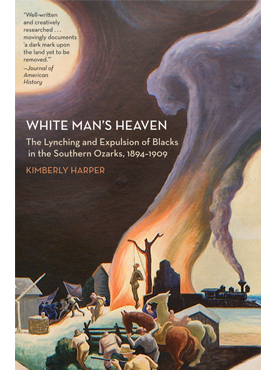 It’s been awhile, but it seems only natural to recommend a good book to help us understand these turbulent times. If you have not read it,”White Man‘s Heaven: The Lynching and Expulsion of Blacks in the Southern Ozarks, 1894-1909″ by Kimberly Harper explores the complex racial dynamics of the early twentieth century Ozarks. If you are like us, you might have grown up in Southwest Missouri during a time when there were few, if any, people of color in your community and wondered why. Well, this is why. One reader called it the Ozarks version of “To Kill a Mockingbird.”
It’s been awhile, but it seems only natural to recommend a good book to help us understand these turbulent times. If you have not read it,”White Man‘s Heaven: The Lynching and Expulsion of Blacks in the Southern Ozarks, 1894-1909″ by Kimberly Harper explores the complex racial dynamics of the early twentieth century Ozarks. If you are like us, you might have grown up in Southwest Missouri during a time when there were few, if any, people of color in your community and wondered why. Well, this is why. One reader called it the Ozarks version of “To Kill a Mockingbird.”




